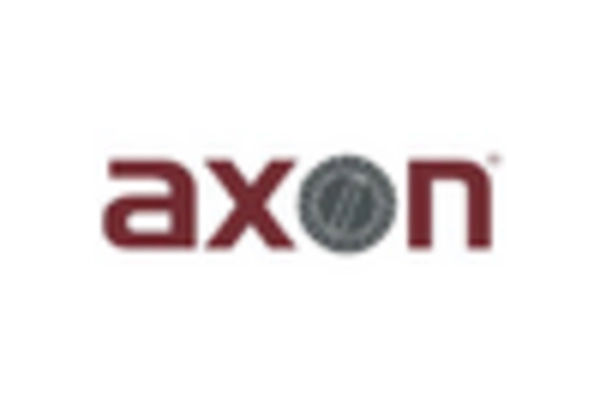Growth of Law Enforcement Budgets
In recent years, law enforcement agencies across the US have seen an increase in their budgets, which has positively impacted the digital evidence-management market. With enhanced funding, agencies are able to invest in advanced technologies and training for personnel, thereby improving their capabilities in managing digital evidence. This trend is reflected in the allocation of funds towards digital evidence-management systems, which are essential for effective crime investigation and prosecution. As agencies continue to prioritize technology investments, the digital evidence-management market is likely to experience sustained growth, with an emphasis on solutions that enhance operational efficiency and evidence integrity.
Rising Demand for Digital Forensics
The increasing complexity of cybercrimes and digital fraud has led to a heightened demand for digital forensics within the digital evidence-management market. Law enforcement agencies and private organizations are investing in advanced tools to collect, analyze, and preserve digital evidence. According to recent data, the digital forensics segment is projected to grow at a CAGR of approximately 12% over the next five years. This growth is driven by the need for effective investigation techniques and the ability to present digital evidence in court. As a result, the digital evidence-management market is experiencing a surge in demand for solutions that can streamline the forensic process, ensuring that evidence is handled in a legally compliant manner.
Emergence of Advanced Analytics Tools
The The digital evidence management market is witnessing a shift towards the adoption of advanced analytics tools. These tools enhance the processing and analysis of digital evidence. These tools enable organizations to derive actionable insights from large volumes of data, facilitating quicker decision-making and more effective investigations. The integration of analytics into evidence management systems is becoming increasingly important, as it allows for the identification of patterns and trends that may not be immediately apparent. This trend is expected to drive the growth of the digital evidence-management market, as organizations seek to leverage data analytics to improve their investigative processes and outcomes.
Increased Focus on Cybersecurity Measures
As cyber threats continue to evolve, there is a growing emphasis on cybersecurity measures within the digital evidence-management market. Organizations are recognizing the need to protect digital evidence from unauthorized access and tampering. This has led to the development of more secure evidence-management solutions that incorporate encryption, access controls, and audit trails. The market is responding to this demand by offering products that not only manage evidence but also ensure its security throughout the lifecycle. As cybersecurity becomes a priority for organizations, the digital evidence-management market is likely to expand, driven by the need for solutions that safeguard sensitive information.
Legislative Changes and Compliance Requirements
Recent legislative changes in the US have imposed stricter compliance requirements on organizations regarding data management and evidence handling. The digital evidence-management market is significantly influenced by these regulations, which mandate the secure storage and retrieval of digital evidence. Organizations are compelled to adopt robust evidence-management systems to avoid legal repercussions and ensure compliance with laws such as the Federal Rules of Evidence. This has led to an increase in investments in digital evidence-management solutions, as companies seek to mitigate risks associated with non-compliance. The market is expected to expand as more organizations recognize the importance of adhering to these evolving legal standards.

















Leave a Comment